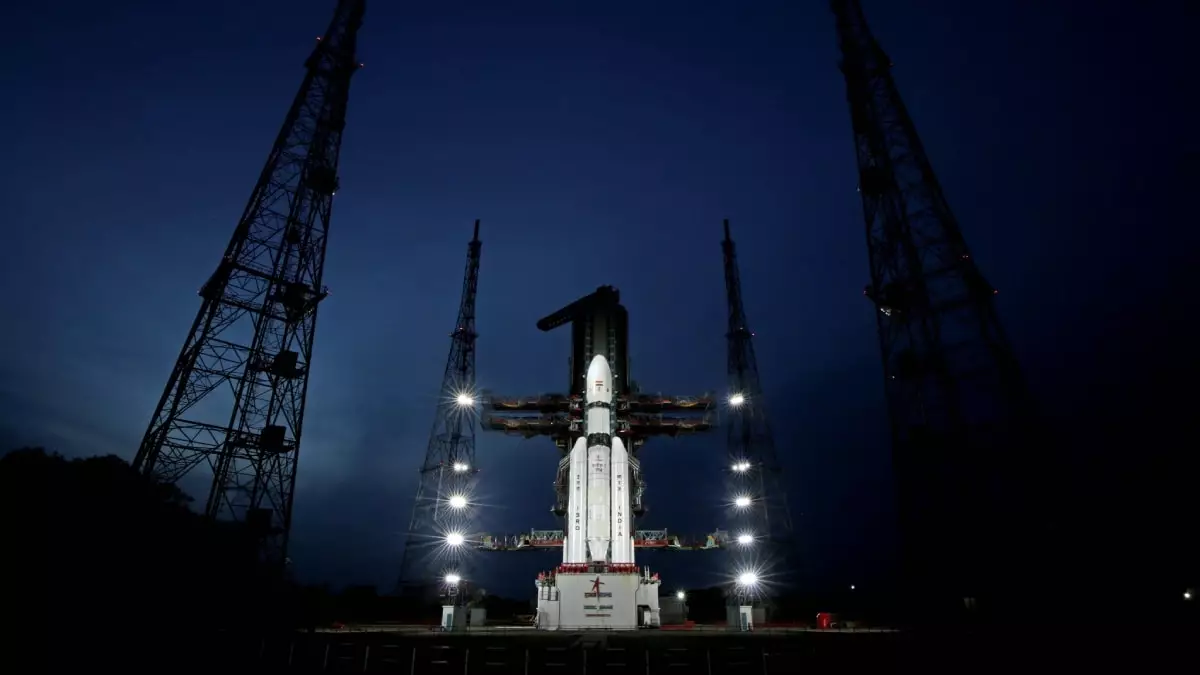India’s ambitious third Moon mission, Chandrayaan-3, has taken another step towards its goal of landing on the lunar surface. The spacecraft recently underwent a precise manoeuvre that has brought it into a “near-circular orbit” around the moon, according to the Indian Space Research Organisation (ISRO). Since its launch on July 14, Chandrayaan-3 has made significant progress in its journey. It entered the lunar orbit on August 5 and has completed two orbit reduction manoeuvres on August 6 and 9.
The next operation for Chandrayaan-3 is scheduled for August 16 at around 8:30 am. ISRO plans to perform one more manoeuvre to position the spacecraft in a 100 km orbit. Following this, the lander and rover will break away from the propulsion module. The lander is expected to undergo a “deboost” process to slow down and make a soft landing on the Moon’s south polar region on August 23.
ISRO Chairman S Somnath emphasized the critical nature of the landing process during a recent statement. The most challenging part of the landing is transitioning the velocity of the lander from a height of 30 km to the final landing. Additionally, the spacecraft must change its orientation from horizontal to vertical. Somnath referred to this transformation as a mathematical calculation and highlighted the need for simulations and proper algorithm functioning. He emphasized the changes that have been made in guidance design and the implementation of new algorithms to ensure a successful landing.
ISRO has been steadily increasing the distance between the Chandrayaan-3 spacecraft and the Earth. Over the past three weeks since the July 14 launch, the spacecraft has been lifted into orbits farther and farther away from our planet. On August 1, a crucial manoeuvre known as a slingshot move propelled the spacecraft towards the Moon from Earth’s orbit. This trans-lunar injection enabled the Chandrayaan-3 spacecraft to break free from Earth’s gravitational pull and begin its journey towards the moon.
Chandrayaan-3 is a follow-on mission to Chandrayaan-2 and aims to demonstrate the capability of safe landing and roving on the lunar surface. The mission consists of an indigenous propulsion module, a lander module, and a rover. The objective is to develop and showcase new technologies required for inter-planetary missions. The propulsion module will accompany the lander and rover configuration until they reach the 100 km lunar orbit. The propulsion module also includes the Spectropolarimetry of Habitable Planet Earth (SHAPE) payload, which will study the spectral and polarimetric measurements of Earth from the lunar orbit.
Demonstrating Safe Landing and Rover Roving
The primary objectives of Chandrayaan-3 are to achieve a safe and soft landing on the lunar surface, demonstrate rover mobility on the Moon, and conduct in-situ scientific experiments. The lander has the capability to softly land at a designated lunar site and deploy the rover for in-situ chemical analysis of the Moon’s surface. Both the lander and rover carry scientific payloads to conduct experiments and gather valuable data on the lunar surface.
India’s Chandrayaan-3 mission is progressing steadily towards its ultimate goal of landing on the Moon’s surface. The recent manoeuvres have successfully brought the spacecraft closer to its destination. With a focus on precise calculations, simulations, and algorithm improvements, ISRO is determined to overcome the challenges faced during the landing process. As Chandrayaan-3 continues its journey, it not only showcases India’s growing prowess in space exploration but also paves the way for future inter-planetary missions and advancements in space technology.


Leave a Reply